Our Verdict
A fiery test of awareness, speed and accuracy which upholds the series' devotion to teamwork and authenticity, but doesn't nail the asymmetry of modern era combat.
PC Gamer's got your back
What is it? A 64-player objective-based FPS with heavy focus on team tactics.
Expect to pay $25/£19
Developer Antimatter Games, Tripwire Interactive
Publisher Tripwire Interactive
Reviewed on Windows 10, Intel Core i5-3570, 8 GB RAM, Nvidia GTX Titan
Multiplayer 64 players between two teams.
Link Official site
Buy it Humble Store (Digital Deluxe edition)
Read our affiliates policy.
A lot of games try to emulate suppression, to approximate what it’s like to be fired upon, but Rising Storm 2: Vietnam does it more effectively than any of them. It's not through fidelity—the particle effects are unimpressive—or even the heavily applied post-processing that blurs your vision. The panic is kicked up by the contradiction of being utterly fragile and needing to throw your body at the enemy anyway. Stay still and lose, move and die. Rising Storm 2 forces us into chaos with enough authenticity to let us be consumed by it more often than not.
The latest from Tripwire and Antimatter Games is a lateral move: the same 64-player, tactics heavy battles of the World War II-based Red Orchestra series, now in Vietnam, with assault rifles and helicopters and tunnels. Where the Battlefield games provide military playgrounds with activities for everyone, Rising Storm 2 generates military anarchy that must be coaxed toward victory by able commanders and squad leaders. On an individual level, it’s about performing unlikely feats of marksmanship despite a hundred sounds and two million jungle pixels distracting you from the little clump of color that counts: a helmet in the distance, just peeking over a rock.
Rising Storm 2’s maps are more naturalistic than Battlefield maps. Cover is scattered about in the form of concrete half-walls, crumbling buildings, crawl spaces, jungle foliage and the crispy remains of tanks. The angles are more erratic, and the frontline less fixed. I love the moments where I've gotten turned around, and accidentally found myself behind the enemy's advance. It’s a hunt for clarity amid chaos—knowing where to aim is the first step in aiming.
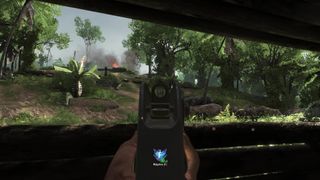
As a result, Rising Storm 2 isn’t as routine as Battlefield 1, where I know that on Fao Fortress, for instance, capturing the Ottoman stronghold is a useless grind for prime sniping spots, and it’s nearly always better to hold Delta and use it to stage attacks on the lowground. Rising Storm 2’s new Supremacy mode, which is similar to Battlefield’s Conquest mode in that each team can capture any point on the map at any time, isn’t so obvious. Without a communicative commander (one player on each team who monitors the map, calls in spotting planes, and initiates artillery and napalm strikes and other wide area attacks), a loss is almost guaranteed, because if everyone is doing their own thing they’re likely to accomplish nothing.
Positioning is everything
One well-positioned soldier can pin an entire squad in place.
Replacing the bolt-action rifles of the series’ World War 2 games is the far deadlier technology of the '60s: the AK-47, the M16A1, the M14. Having 64 automatic or semi-automatic weapons on the field makes any dash out of cover near futile without covering fire, and means one well-positioned soldier can pin an entire squad in place. No longer can players dance around each other, swinging the long barrels of Springfields and Karabiner 98ks, firing, missing, and firing again as if playing Unreal Tournament instagib. Close-quarters meetings are resolved near-instantly as both players spray each other down with bullets. I miss that test of reflexive, single-shot marksmanship, though in its place Rising Storm 2 increases the importance of positioning, smoke grenades, awareness, and speed, demanding that you spot enemies rapidly and decide to shoot with no hesitation.
Playing a round of Territories, the series’ core mode in which one team defends a series of strongholds while the other attempts to capture each of them in sequence, is reminiscent of the 2014 Tom Cruise flick Edge of Tomorrow. On my first life I was shot by a sniper I never saw, and won’t see for three more lives. Next my whole squad was hit by a grenadier. A few more lives later, I’ve killed the sniper, dodged the grenadier, and have now run head first into the long, flicking tongue of a flamethrower.
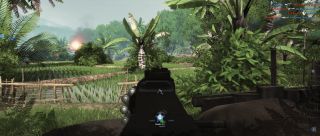
The most exciting moments of Rising Storm 2 are when you wiggle your way into a blind spot, and I prefer playing defense for this reason. Individual power is muted on the attack, where simply getting your body on the point is the most important task, but as a defender there’s more time to seek out a dominant position. When I load into the game fast enough to claim one of the limited specialty classes, I prefer machinegunner. The most fun I have is when battlefield intelligence and my own intuition align to give me clear view of an enemy lane, where I can singlehandedly suppress an assault with bursts of fire and save a flank while I reroute my team to come help.
I love those brief acts of individual heroism, though they are a small part of the team-focused roleplay. The bulk of any match is going to be spent laying down suppressive fire, calling out enemy locations, and edging into good positions. Communication is vital. Recently, I enjoyed having a little chat with a friendly sniper who was concerned my machinegun fire would draw attention to him, and of course, I relocated as a result. What Red Orchestra and Rising Storm remain great at is getting players to approach battles in physical terms. Excepting the cries of “get on the point,” we don’t talk much about gun balance or game systems, but of hillsides and LZs and flanks.
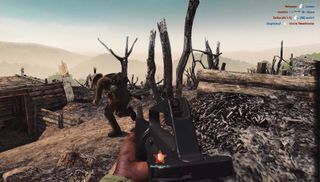
Aim and fire
Tripwire’s Killing Floor 2 is all about close-range marksmanship: dual wielding Desert Eagles, each pointed inward, and intuiting the path from each barrel to the heads of mutants. As in the Rising Storm series, there's no reticle—just your sights. In Battlefield, meanwhile, guns lob glowing paintballs, and a headshot from any distance is like hitting a three-pointer, using your mental TI graphing calculator to draw a parabola that intersects with your target. In contrast to these games, Rising Storm 2 ups the bullet velocity and obscures your vision with bulky sights, muzzle flashes and smoke. I’m less focused on the physics of my projectiles—point at head, hit head—and more concerned with how quickly and accurately I can slide my mouse into position and keep it on a moving target, even when I can't see the target and have to guess their velocity.
The guns are plain and unembellished, though each is distinct in its firing behavior. The M16A1 can be tapped for a single shot with little recoil, while holding down the trigger traces a vertical line that sometimes zig-zags or tends toward the right or left. The SKS-45 Carbine fires single shots with a big kick, the barrel making a roughly circular motion as it tilts upwards on multiple shots. The M3A1 Grease Gun is a bulky metal tube that is pinpoint accurate on close-range single shots, but nearly rams into your nose with each discharge, obscuring your peripheral vision and giving you a wider view through the rear sight. My favored LMGs are best tapped gently, unless you want to shoot at birds.

There isn’t a gun that I don’t like using, and I’m never disappointed to be stuck as a grunt if I don't snag a special class fast enough. AK-47s are powerful, unwieldy bastards that require me to flick my mouse downward harder than I usually expect to keep them on target—not my favorite weapon, but a fun challenge anyhow.
Details beyond the firing animations themselves also bring character to each encounter: the sway when I’m catching my breath from a long run; the way strafing left causes my arms to briefly shift right when I’m out of sights, pointing the barrel off center; the big puffs of dirt that indicate the effect of my suppressive fire. I love lighting up a rock I think someone might be behind, throwing debris everywhere, and then waiting a beat, as if I’m reloading, for a head to pop out of one of the sides.
AK vs M16
I want the sides to play differently, but in this case, one is simply more enjoyable than the other.
As in previous Red Orchestra series games, the teams are asymmetrical, pitting armies with different equipment and different tactics against each other. The rivalry between the AK-47 and M16 is probably the most famous in history, and they absolutely fire differently in Rising Storm 2. The M16’s design and smaller caliber gives it less recoil, for instance, while the AK is more lethal. But this distinction means less than the distinction between bolt-action and semi-auto rifles we saw in Rising Storm. To play up the asymmetry further, Rising Storm 2 somewhat unsuccessfully applies it to how players spawn.
American forces can spawn on their squad leaders, and in Supremacy mode—the one I mentioned is like Battlefield—can also spawn in helicopters which must be landed safely by player pilots to ferry troops around the map. The Vietnamese forces are more limited: they can’t spawn on their squad leaders, but on ‘squad tunnels’ dug by their leaders, which can be spotted and destroyed by Americans. It is more fun to spawn on my squad leader than it is to pop out of a tunnel at some secluded corner of the map, and it adds the subgoal of protecting my leader at all costs. Americans also get another goal: find and destroy squad tunnels, or find them and take up a defensive position near them to suppress them. While in theory tunnels allow the People's Army to appear anywhere on the map in numbers, they often become obsolete. If my leader dropped a tunnel near Alpha and I need to be attacking Delta, it’s no good to me. I want the sides to play differently, but in this case, one is simply more enjoyable than the other.
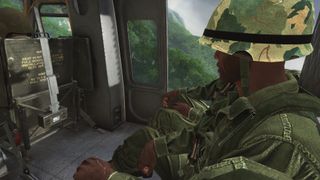
There are also tunnels built into the maps—not squad tunnels, but actual underground tunnels players can move through—which feature Rising Storm 2’s oddest attempt at asymmetry. Americans can’t use their primary weapons in certain tunnels. They’re marked with a warning, and entering automatically switches you to your sidearm. It doesn’t make sense, especially for pointmen who carry SMGs for the purpose of being agile, and applies a hard rule rather than letting asymmetry manifest through the available weapons and tools, such as the People’s Army’s traps versus American flamethrowers.
And even with all the ways to enter the battle, and all the tunnels to crouch-walk through, Supremacy can be a slog for either side. A minute of running might end with a sniper shot, and it’s back to waiting at the spawn screen. Or I might participate in the capture of a point, set up my tripod to defend, and a minute later find that no one is coming to take it from me.
Supremacy is won by earning points from held bases, which must be connected to your home base by other occupied territories. That’s a clever twist on the Battlefield formula and changes the purpose of backcapping (you can’t gain points from an isolated capture, but you can deny them), but the consequence hasn’t been excitement and tension. Rather than pushing up a football field and scoring the winning touchdown with seconds to go, as in Territories, I often find myself capturing mostly-empty points, or chasing off single intruders, or making futile attempt after futile attempt to rush up a contested hill with my squad.
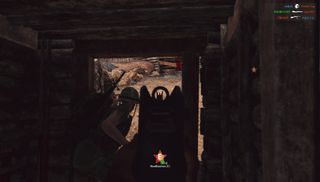
A proper PC game
I've had fun rounds of Supremacy, but I avoid it in favor of Territories. Fortunately, Tripwire and Antimatter are among the few left making proper PC multiplayer games. You join matches through a server browser, not a matchmaking system. Servers have their own cultures, sometimes with custom game rules and Discord invites in their welcome text. There are already player-made maps circulating in a few servers, and they auto-download when you join. If you want a Territories-only server, you can find it. I’ve never had trouble finding a full or near-full server running the mode I want.
The trick is finding a pleasant community which follows through on bans. I’ve never been griefed by a teammate, but one or two assholes on voice chat can put me off communicating with my team entirely—which is the most important thing to do in Rising Storm 2. The server I’ve most enjoyed is, unlikely as it sounds, the Xtremeidiots.com server, which declares “NO racist remarks” and “NO personal attacks” upon joining. So far, that’s been true.
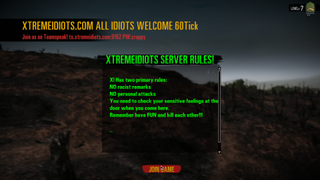
There are no standout details, and no lighting effects that put much tactical importance on shadow and sunlight.
Though it won’t come as a surprise for players of the previous games, it’s worth running down the somewhat lackluster technical properties of Rising Storm 2. The whole of it is impressive—64 players dodging artillery shells and scattering giant maps with bullets—but movement can be finicky, whether I’m jamming space to vault over a barrier I know I can vault over, or struggling to position my tripod while prone without having my character leap into a crouch.
The thickness of the foliage is impressive, and RS2 runs well for me, but the lighting and textures create a flatness that doesn’t say, ‘it’s hot, it’s humid, the air is heavy and dusty and soaked with fuel.’ There are no standout details, and no lighting effects that put much tactical importance on shadow and sunlight. The tech shows its age especially in the ugly dirt textures, the tiling of which is easily noticeable as patterns repeat into the distance.

While Antimatter Games doesn’t take sides in the war, portraying the armies with a fascination for the equipment more than the people, the period music and generic chatter about Charlies suggests war movie rather than reenactment, and the small towers and stilt houses feel like props rather than abandoned homes. It is authentic only to a point. But between the weapon design and the laborious helicopter flying, Rising Storm 2 represents the most thoroughly constructed multiplayer rendition of the war I’ve played.
And like its predecessors, RS2 is still one of the rare shooters that emphasizes fragility over power. It puts more destructive capability in each player’s hands than the series ever has—good communication and good reflexes can make a single AK-47 an absolute monster—but it can also smack your screen to blackness the second you step out of cover. It portrays how fragile individuals can be directed at large scales to produce different outcomes, winning or losing through the accumulation of small victories among countless losses.
A fiery test of awareness, speed and accuracy which upholds the series' devotion to teamwork and authenticity, but doesn't nail the asymmetry of modern era combat.

Tyler grew up in Silicon Valley during the '80s and '90s, playing games like Zork and Arkanoid on early PCs. He was later captivated by Myst, SimCity, Civilization, Command & Conquer, all the shooters they call "boomer shooters" now, and PS1 classic Bushido Blade (that's right: he had Bleem!). Tyler joined PC Gamer in 2011, and today he's focused on the site's news coverage. His hobbies include amateur boxing and adding to his 1,200-plus hours in Rocket League.

HP spends big to secure title sponsorship rights for the Ferrari Formula One team

After 6 years, the FCC has voted to restore net neutrality regulations in a win for the open internet

Hasbro says Magic: The Gathering's Fallout-themed Commander cards were 'probably our best-performing Commander set ever'
